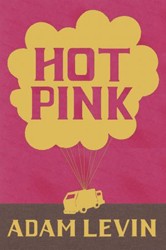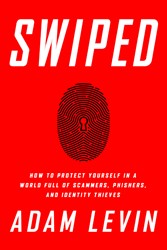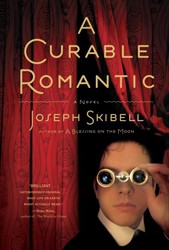The Instructions by Adam Levin is the tenyear- old narrator’s instructions, “translated and re-translated,” culminating in the Gurionic War, published in 2013. Smart-alec Gurion ben-Judah Maccabee is a Mishna know-it-all his friends call Rabbi, a bully who spends his time in the Cage, the highest form of detention. Full of braggadocio and self-importance, he is wise beyond his years in matters of love and justice though in the next breath mired in playground politics. Gurion is extremely thorough, whether he is describing prosaic decisions with an ethical magnifying glass, his quirkily named classmates, how his parents met, episodes from the Torah, or fights blow by blow. If a character says, “Tch,” Gurion illustrates the subtext, assuming the reader is unable to interpret the character’s intentions by the sound alone. For example, “Tch=I already knew that.” Levin’s expansive style includes email chains sent by all the school principals about the risks presented by Gurion (he attempted to start a revolution of penny gun toting Jewish schoolchildren, whom he refers to as Israelites), and bird’s eye view diagrams of classrooms, where instead of lines, words are arranged (“window” is placed where the window is located, between “wall” and “door”). Emphasis on the word as image is one of many comparisons to Jewish scripture that readers will bring to this 1,000 page book.
The language ranges from simple and repetitive childspeak to inventive slang to high-brow jargon. An affectionate Yiddish word from his father reduces this bully to tears. Ever the scholar, Gurion analyzes his way through three days of his life in November, 2006, when he falls in love with Eliza June Watermark. Describing a previous lover, he says with overwrought innocence, “Esther sniffled in a way that I thought was cute because it wasn’t gross at all, even though it meant wet snot was moving around inside of her face.”
The Instructions is more thought-provoking than it is suspenseful or riveting, despite Levin’s adept renderings of puberty-inflected dialogues. Placing a Torah-obsessed romantic in suburban America with a head of political ideas is Levin’s doorway to expounding on the fundamentals of communicating love and passion.
Interview
Adam Levin’s first novel, The Instructions, was published by McSweeney’s Rectangulars. He teaches creative writing at the School of the Art Institute of Chicago. The narrator, Gurion Maccabee, writes in his 1,000-plus page scripture the events of four pivotal days in his life as a middle school rebel. His precocious manifestos, textual analysis of Torah, and tales of suburban life depict Levin’s creatively imagined world of Jewish teachers and students with verve, bright wit, and truth.
Samantha White: How would you describe your Jewish upbringing and education?
Adam Levin: I went to Solomon Schechter, a Jewish day school, for kindergarten. Then, leading up to my bar mitzvah I went to Hebrew school three times a week. My household was as Jewish as I wanted it to be. The second I wasn’t into doing Passover, we didn’t do it, although I had mistakenly assumed my dad was a devout Jew. Like one year I didn’t want to throw all the food away, so we didn’t.
My mother’s background is interesting. She was raised atheistically. She immigrated from Poland to Israel to the U.S. and then went to Stern College where she got into religion. Her father was a physicist, an atheist.
SW: How were you able to integrate Jewish texts?
AL: I went to Solomon Schechter, a Jewish day school, for kindergarten. Then, leading up to my bar mitzvah I went to Hebrew school three times a week. My household was as Jewish as I wanted it to be. The second I wasn’t into doing Passover, we didn’t do it, although I had mistakenly assumed my dad was a devout Jew. Like one year I didn’t want to throw all the food away, so we didn’t.
My mother’s background is interesting. She was raised atheistically. She immigrated from Poland to Israel to the U.S. and then went to Stern College where she got into religion. Her father was a physicist, an atheist.
SW: What did you want to be when you grew up?
AL: Growing up I wanted to be a rock star but I was always writing and reading religiously. I started really reading literature in sixth grade and read Slaughterhouse Five eleven times. I can’t ever read it again. In college I was in a band playing bass but I got sick of relying on people to create. I decided, I’m not going to make music anymore. I’m just going to write all the time.I got a Masters in Social Work at the University of Chicago because I wanted to help people. It’s one of those things that seems Jewy somehow. You end up with a lot of crazy friends and they’re always talking, so they always talk to you and you help them. They’re thrilled that they can talk, and I got this idea that I was good at helping people. So I did that. I was pretty good at it but I don’t want to do it anymore. It was messing my life up a little. It gets sort of heavy. I would come home and want to write, read, and disappear from life. It wasn’t joyful for me.
SW: Did you get an MFA?
AL: Getting an MFA at Syracuse University was a great experience. George Saunders was my hero before I ever met him. I worshipped his work. I would do those three years over again many times.
SW: When did you start writing The Instructions?
AL: I started writing it in October 2001, right after I got to Syracuse and right after September 11 but I wouldn’t make too big a deal about it. I’d been thinking about terrorism a long time before that.
SW: How long did it take to write?
AL: It took me about eight years to write while obsessively editing it everyday. It took another 18 months after it was set to be published editing more.
The main concern for me is to make an emotionally engaging work of art. Ultimately, it’s a book about some characters whom you come to care about and who move you. I wanted it to be fun, a joy to read.
The best novels break your heart, wreck you. My hope would be that the book leaves people feeling really conflicted about Gurion, about anything that goes on. At various parts of the book, you want to cheer for him or put him down. I tried as best I could to make both those reactions never fully satisfying. If you read it and think he’s the messiah, that’s boring; if he’s a jerk, that’s boring too.
The main thing I wanted to do was not make any straw men. When I deal with religious folks I tend to like them more than a lot of people I hang out with do. I felt duty bound to not represent them in any kind of stereotypical way, so I balanced Rabbi Unger, a jerk with some sense of reasoning, against Rabbi Salt, a real sweetheart. I wanted religious Jews to be complicated.
I think the book will upset some people — generally, people who didn’t finish the book. People who actually read the whole book will feel complicated when they finish it, which is good.





